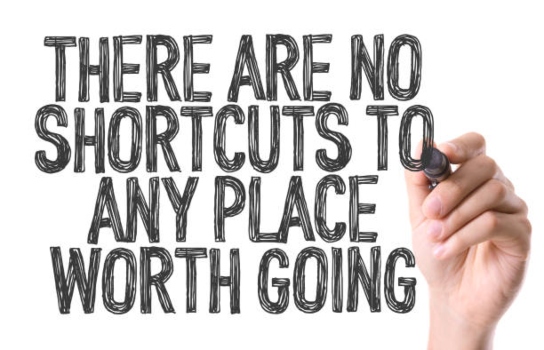As a Contractor What Did you Expect?
As someone who has been in construction for more than forty years, I’ve worked for my share of hard customers. This does not mean that they are bad customers. On the contrary, more often than not the opposite is true. They are the best customers because they have a high standard and expect high quality.
There are, however, those customers that are difficult. Ones that perceive the process of a construction project to be more of a battle that they need to win.
These aren’t the kind of customers that I’m referring to when I’m talking about customers being hard work.
Most of the time the problem is with the “professionals” doing the construction. For whatever reason, they expect construction projects to be simple, that everything will go just as planned.

This isn’t the way life is. Why would we expect construction projects to be any different?
As construction contractors, if we’re doing our job well…it should be hard work.
Hard work isn’t bad. Actually, I think the opposite is true. I think if we’re doing our job well as contractors…we will be working hard.
So, what is it that makes a customer hard work?
I think the number one reason is the contractor and customer approach construction projects from different perspectives. The customer sees their dream project in its completed and finished beauty. They have little or no idea of the processes and struggles that it takes to get the project there.
The contractor, on the other hand, knows that there will be bumps and detours along the way.
The problems arise when there is a breakdown in communication.

Often the contractor isn’t hearing what it is that the customer wants. Or he’s more interested in making money than fulfilling the customer’s dream.
As contractors, even when we have a clear idea of what the customer wants, sometimes isn’t obvious to the customer until they see it.
When faced with these situations we can say, “This is what they said they wanted. It’s what they agreed to in the scope of work that they signed.” This answer is the easy way out for the contractor.
Or we can put in the hard work and find a solution.
We’re currently working on a hundred-year-old tongue and groove wood floor that had never been finished. The customer liked the way the floor looked as it is. The plan was to sand it down and put a low sheen clear finish on it.
The problem arose when the clear finish brought out a red tint that was unexpected. Now what are we going to do?
Some contractors would tell the customer that it looks good, and they’ll get used to it. And wouldn’t that be the easy way to handle it?
The other option would be to listen to the customer. Make solving this issue as important to you as if it were your own project and you didn’t like the way it looked.
We’re going to sand it down again and work on different options. This might mean applying a stain to cover the red tint of the wood. Or maybe we’ll apply an oil finish to it. Or…maybe we’ll just leave it unfinished.
Ultimately…we’re going to work hard because this customer is worth it.

We’ll keep you up to date on how the project’s going and what we do with the floor in future posts.












 The same is true for a construction project – what materials are going to be used, how much is going to be used and how well do you want it built? There is a wide variety of products out there and it is important that your contractor asks enough of the right questions to know what and how many ‘groceries are going in the bag’.
The same is true for a construction project – what materials are going to be used, how much is going to be used and how well do you want it built? There is a wide variety of products out there and it is important that your contractor asks enough of the right questions to know what and how many ‘groceries are going in the bag’.



